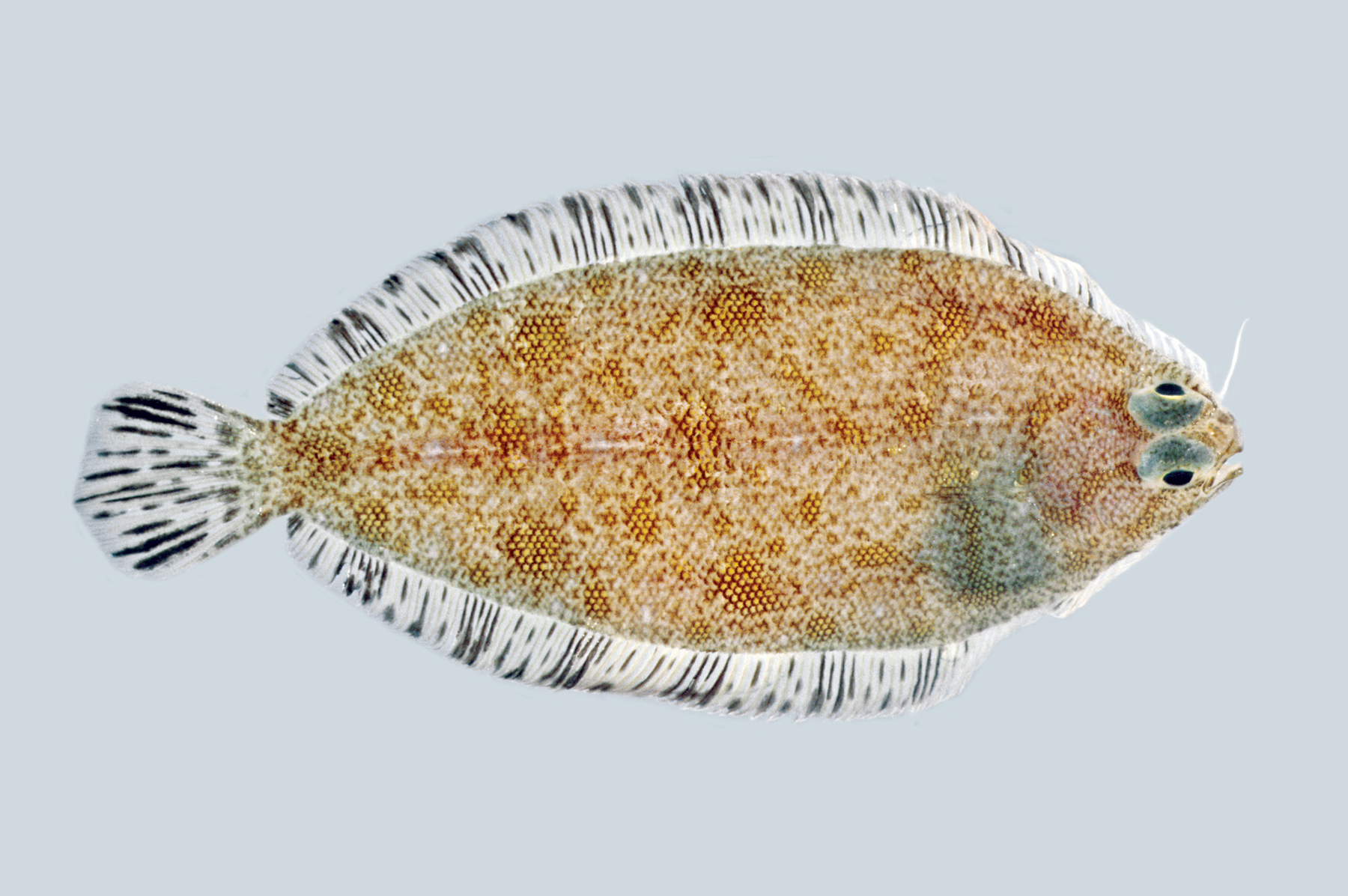- Classification
- ACTINOPTERYGII
- PLEURONECTIFORMES
- PLEURONECTIDAE
- Azygopus
- pinnifasciatus
Banded-fin Flounder, Azygopus pinnifasciatus Norman 1926
Other Names: Bandedfin Flounder

Banded-fin Flounder, Azygopus pinnifasciatus. Source: Rudie H. Kuiter / Aquatic Photographics. License: All rights reserved
Summary:
A relatively small brownish flounder with several darker, irregular large blotches on the upper side, dark bands on the dorsal and anal fins, and dark caudal-fin membranes. The blind side is peppered with numerous, small, reddish-brown spots.
Cite this page as:
Bray, D.J. 2022, Azygopus pinnifasciatus in Fishes of Australia, accessed 02 Jul 2025, https://fishesofaustralia.net.au/home/species/986
Banded-fin Flounder, Azygopus pinnifasciatus Norman 1926
More Info
|
Distribution |
Endemic to southern Australia from off Cape Hawke, New South Wales, to southwest of Esperance, Western Australia, including around Tasmania, at depths to 900 m (most abundant at 400–600 m) on the continental shelf and slope. Inhabits soft sediment areas. |
|
Colour |
Ocular-side brown with diffuse, circular or sometimes ring-shaped blotches, and many scale pockets with distinct black outlines. Blind-side scales with several to many reddish-brown pepper-dot melanophores, that are especially numerous on the scales overlying the proximal pterygiophores of the dorsal and anal fins. |
|
Feeding |
Feeds on bentbhic invertebrates. |
|
Biology |
The biology, ecology and life history of this species is unknown. |
|
Fisheries |
Taken as by-catch in deepwater trawl fisheries. |
|
Remarks |
In most earlier publications, this species was confused with the similar Azygopus flemingi, found in New Zealand waters (Munro 2012). |
|
Species Citation |
Azygopus pinnifasciatus Norman, 1926, Biol. Res. F.I.S. Endeavour 1909-1914 5(5): 262, fig. 10. Type locality: Great Australian Bight, 126°30'E, southwestern from Eucla, Australia. |
|
Author |
Bray, D.J. 2022 |
|
Resources |
Banded-fin Flounder, Azygopus pinnifasciatus Norman 1926
References
Bulman, C., Althaus, F., He, X., Bax, N.J. & Williams, A. 2001. Diets and trophic guilds of demersal fishes of the south-eastern Australian shelf. Marine and Freshwater Research 52: 537–548.
Gomon, M.F. 1994. Family Pleuronectidae. pp. 851-859, figs 753-760 in Gomon, M.F., Glover, C.J.M. & Kuiter, R.H. (eds). The Fishes of Australia's South Coast. Adelaide : State Printer 992 pp. 810 figs.
Gomon, M.F. 2008. Family Rhombosoleidae (Austral Righteye Flounders). pp. 810–816 in M.F. Gomon, D.J. Bray & R.H. Kuiter (eds). Fishes of Australia’s Southern Coast. Reed New Holland, Sydney. 928 pp.
Last, P.R., Scott, E.O.G. & Talbot, F.H. 1983. Fishes of Tasmania. Hobart : Tasmanian Fisheries Development Authority 563 pp. figs.
May, J.L. & Maxwell, J.G.H. 1986. Field Guide to Trawl Fish from Temperate Waters of Australia. Hobart : CSIRO Division of Marine Research 492 pp.
Munroe, T.A. 2012. The spotted flounder, Azygopus flemingi Nielsen 1961 (Pisces: Pleuronectiformes: Rhombosoleidae), from deep waters off New Zealand: a second valid specis of Azygopus Norman 1926, with notes on distribution, size, maturity, and ecology. Zootaxa 3297: 1-33. https://doi.org/10.11646/zootaxa.3297.1.1
Munroe, T.A. 2021. Azygopus pinnifasciatus. The IUCN Red List of Threatened Species 2021: e.T158645678A158674007. https://dx.doi.org/10.2305/IUCN.UK.2021-2.RLTS.T158645678A158674007.en. Accessed on 25 October 2022.
Norman, J.R. 1926. A report on the flatfishes (Heterosomata) collected by the F.I.S. Endeavour, with a synopsis of the flatfishes of Australia and a revision of the subfamily Rhombosoleinae. Biological Results of the Fishing Experiments carried on by the F.I.S. Endeavour 1909-1914 5(5): 219-308 figs 1-15
Norman, J.R. 1934. A Systematic Monograph of the Flatfishes (Heterosomata) Psettodidae, Bothidae, Pleuronectidae. London : British Museum Vol. 1 459 pp. 317 figs.
Sakamoto, K. 1984. Interrelationships of the Family Pleuronectidae (Pisces: Pleuronectiformes). Memoirs of the Faculty of Fisheries, Hokkaido University 31(1,2): 95-215 figs 1-51
Williams, A., Althaus, F., Pogonoski, J., Osterhage, D., Gomon, M., Graham, K., Appleyard, S.A., Gledhill, D., Bray, D., McMillan, P., Green, M., Doyle, S., Graham, A., Tanner, J. & Ross, A. 2018. Composition, diversity and biogeographic affinities of the deep-sea (200–3000 m) fish assemblage in the Great Australian Bight, Australia. Deep-Sea Research Part II: 92-105.



